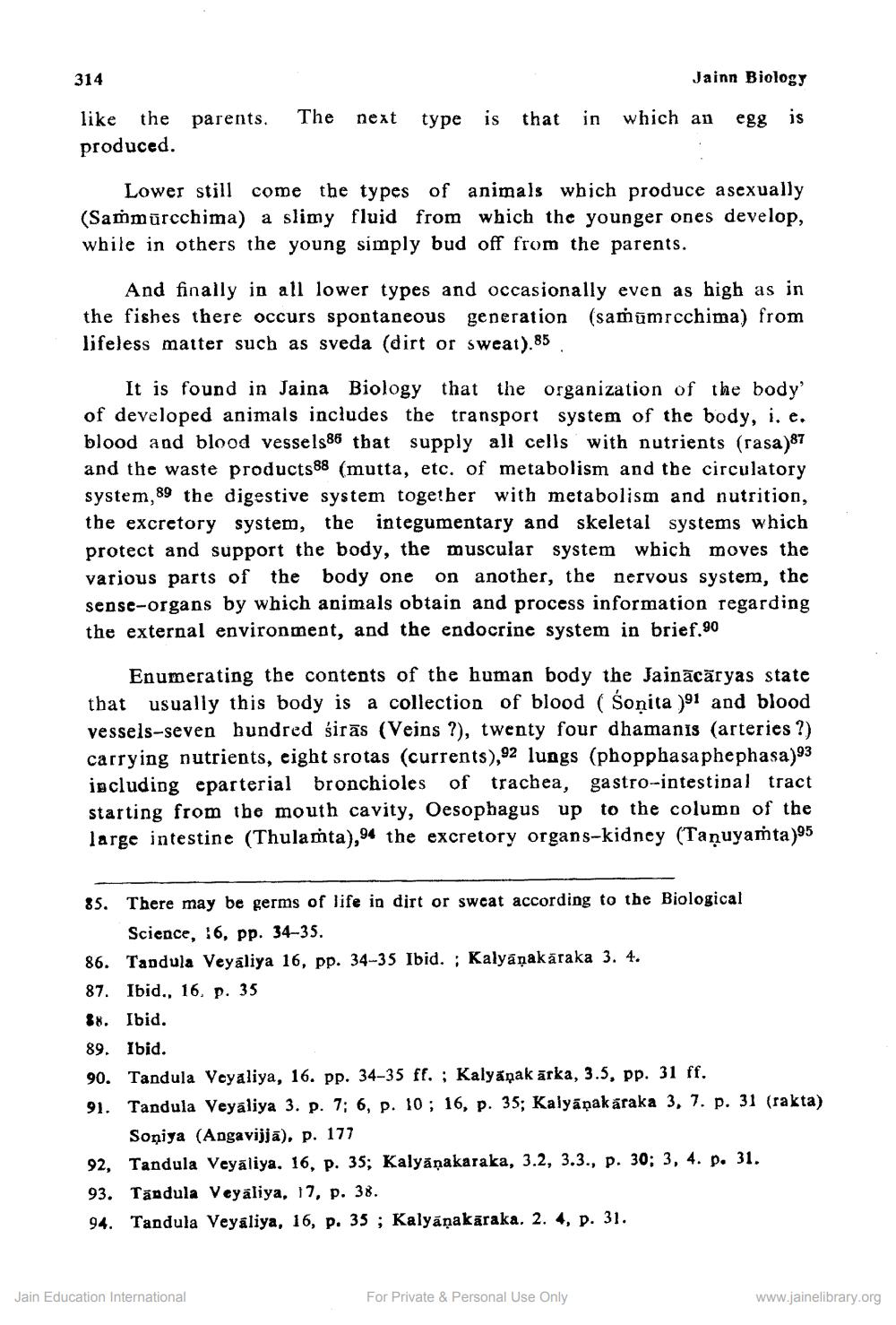________________
314
like the parents. The next type is that in which an produced.
Jainn Biology
egg is
Lower still come the types of animals which produce asexually (Sammurcchima) a slimy fluid from which the younger ones develop, while in others the young simply bud off from the parents.
And finally in all lower types and occasionally even as high as in the fishes there occurs spontaneous generation (samumrcchima) from lifeless matter such as sveda (dirt or sweat),85
It is found in Jaina Biology that the organization of the body' of developed animals includes the transport system of the body, i. e. blood and blood vessels86 that supply all cells with nutrients (rasa)87 and the waste products88 (mutta, etc. of metabolism and the circulatory system,89 the digestive system together with metabolism and nutrition, the excretory system, the integumentary and skeletal systems which protect and support the body, the muscular system which moves the various parts of the body one on another, the nervous system, the sense-organs by which animals obtain and process information regarding the external environment, and the endocrine system in brief,90
Enumerating the contents of the human body the Jainacaryas state that usually this body is a collection of blood (Sonita )91 and blood vessels-seven hundred siras (Veins ?), twenty four dhamanis (arteries?) carrying nutrients, eight srotas (currents),92 lungs (phopphasaphephasa)93 including eparterial bronchioles of trachea, gastro-intestinal tract starting from the mouth cavity, Oesophagus up to the column of the large intestine (Thulamta),94 the excretory organs-kidney (Taṇuyamta)95
85. There may be germs of life in dirt or sweat according to the Biological Science, 16, pp. 34-35.
86. Tandula Veyaliya 16, pp. 34-35 Ibid. ; Kalyāṇakaraka 3. 4.
87. Ibid., 16. p. 35
88. Ibid.
89. Ibid.
90. Tandula Veyaliya, 16. pp. 34-35 ff.; Kalyanak arka, 3.5, pp. 31 ff.
91. Tandula Veyaliya 3. p. 7; 6, p. 10; 16, p. 35; Kalyanak äraka 3, 7. p. 31 (rakta)
Soniya (Angavijjā), p. 177
92, Tandula Veyäliya. 16, p. 35; Kalyanakaraka, 3.2, 3.3., p. 30; 3, 4. p. 31.
93. Tändula Veyaliya, 17, p. 38.
94. Tandula Veyaliya, 16, p. 35; Kalyāṇakaraka. 2. 4, p. 31.
Jain Education International
For Private & Personal Use Only
www.jainelibrary.org




